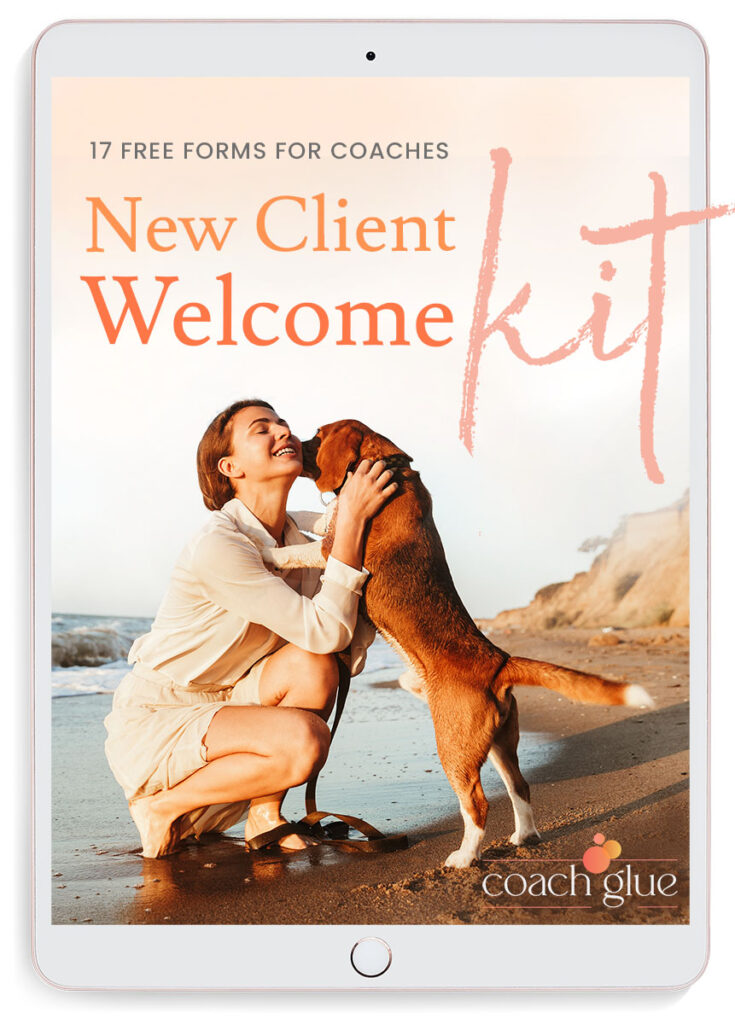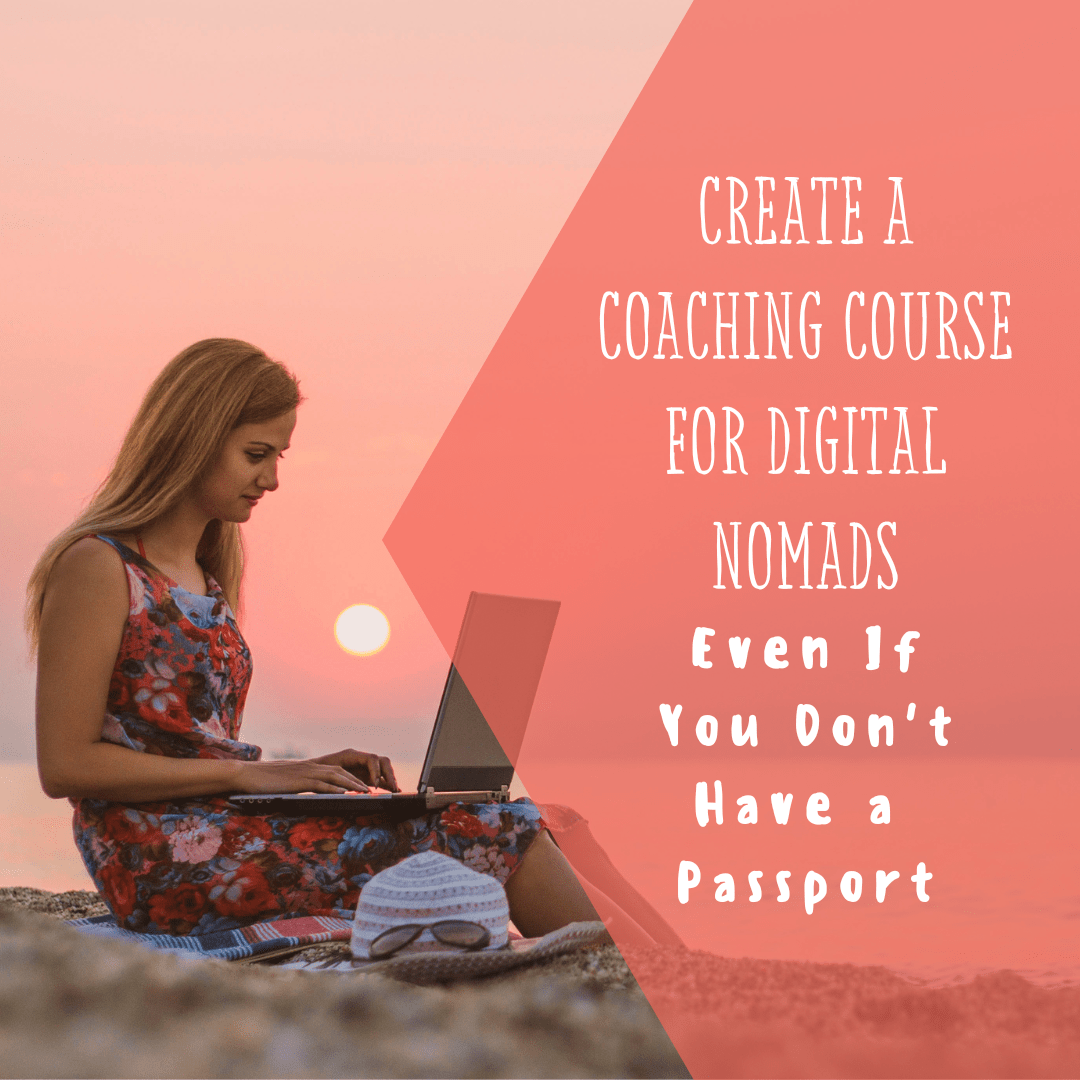Is ‘create a course’ at the top of your entrepreneurial wish list, but you’re overwhelmed or don’t know where to start? Or are you a seasoned course creator, but still feel like you don’t have a good ‘process’ in place for creating epic course content?
You’re in the right place.
Listen. If you’ve ever thought….
“I’d love to have an online course like so-and-so coach, but it just seems like a crazy amount of work.”
“I have so much to share! How could I narrow it down?”
“I know what I want to say in general, but how do I actually turn that into specific, actionable course content?”
We get it. Creating an online course that is as powerful and transformative as your individual coaching work–and still easy-to-follow and consume is no walk in the proverbial park.
Still, creating online courses is a fantastic way for coaches just like you to scale your business and leverage your limited time and energy. From creating a sparkling new stream of income to moving away from trading dollars for hours (like the traditional coaching model) to impacting more lives than you ever imagined with your brilliance, there are about a million and one benefits to creating courses. (And we’re definitely ‘here for’ that last part!)
But what do you do if you know you want to create a course, but don’t know how to go from idea to income? Like, how do you actually plan your modules? How do you know what to include, and what to leave out? And how do you make sure your students get stellar results along the way?
Check out our five steps for planning your course content with more ease:
1) Pick the Perfect Topic
Start by defining your content topic at a high level.
Let’s say you want to create a course around online marketing. This is obviously a super broad topic–but it’s still a great starting point!
So, let’s break it down even further.
What specific aspect of marketing do you love the most? Is it email marketing, social media marketing or maybe even paid ads?
The more clarity you have on your topic, the easier (and more fun!) creating your course content will be.
Of course, what you want to teach is only one part of the equation. Be sure to take into account what your audience wants–or needs–from you, too.
2) Start with the End Result in Mind
Now that you know your topic, it’s time to start planning the content.
Here’s where most course creators go wrong: They try to create their course content from start-to-finish. (And don’t get us wrong: We get it. It seems logical, right?)
The truth, though, is that it’s almost always 1000x easier (give or take) to ‘reverse-engineer’ your content.
This means you start with the end goal in mind and work backward to outline and create your content.
So, how do you do that exactly? Well, you’ll need to ask yourself a few questions:
- What’s the ultimate goal of your course?
- What do you want your students to walk away with–either tangibly, or in terms of knowledge or experience?
These pieces together are your end result. (For the email marketing example, it might be that the end result is a fully created ‘welcome email funnel.’)
Which leads us to our next step…
3) Suss Out Each Individual Step Along the Way
Knowing your end result–a result that you’re confident you can help your client achieve and are also confident your client actually wants to achieve–is half the battle.
Now, you’ll need to work backward from the end result to figure out what steps your students need to take to get from where they are now to the coveted end result.
It can help to try the reverse-engineering process here, too. For example, if the end result is a welcome email sequence, what happens right before the end result? And before that? And before that? (And…you get the gist!)
If you’re struggling to work backward this way, then go ahead and try filling in your steps from beginning to end instead.
Here are a few questions to ask along the way if you get stuck:
- What steps do they need to take first? Next? After that?
- What systems do they need to implement to achieve the end result?
- What ideas and/or beliefs do they need to develop and/or give up along the way? (Mindset is huge in our industry, so don’t forget to include it in your course content if it makes sense! For example, maybe your email marketing course includes an entire module on letting go of writer’s block or the ‘fear’ of visibility.)
Once you’re done and you’ve crafted a complete step-by-step roadmap–congrats!
Each ‘step’ in this process can become its own module in your course.
Pro tip: It can also be helpful to define an ‘end result’ for each step/module (in addition to the final result) to help you guide you through the next step.
Speaking of…
4) Get Granular Within Each Module
Now that you know your main topic and course modules, it’s time to start figuring out the specific subtopics (read: lessons) you’ll need to cover within each module to guide the student to the final outcome.
For example, let’s stick with the email marketing course example. Let’s say you decided that your first step/module is to help them create their very own irresistible lead magnet.
This is a fantastic module idea–but it also requires its own set of steps to go from idea to reality.
When planning the content to go inside this module, ask yourself what specifically your students needs to do to create a lead magnet.
Do they need to dig into audience research, then pick a lead magnet topic, then write the content, then hire a designer (or DIY it) so it looks as nice as it reads?
Each of these individual subtopics can become its own lesson–whether that’s a short video, a PDF workbook or a homework assignment. (More on how to choose the format of your course content in a minute!)
Pro tip: Keep it actionable! If you want to make sure your students get the absolute most out of your course, you need to give them more than just theory. At the end of each module, provide them with homework or an activity to either guide them along the process or solidify the knowledge they just soaked up.
5) Choose (the Most) Compelling Content Format
Now that you know what you’re sharing, it’s time to get clear on how to best share it with your people.
Most online courses include some combination of video content, screensharing, PDF workbooks or text and sometimes even audio-only lessons.
For example: Maybe your email marketing course will include a brief 3-minute video on the topic, followed by an actionable PDF workbook. Or–if it’s a larger module–it might include several 3-minute videos, a screenshare video and a PDF workbook. There are lots of ways you can do this, and there’s no ‘wrong way.’
Here are a few things to think about:
- How do your people like to consume content? (If you’re a podcast host and tend to get lots of clients via your podcast, you might consider videos and/or audio lessons, for example.)
- How do you ‘show up’ best?
- Do these two answers overlap? And if not, can you figure out a creative way to both deliver what your audience prefers and do it ‘your way’? (If they’re podcast listeners but you’re more of a writer, maybe you write out your content first, then record yourself reading it back.)
There you have it, friend. This simple, streamlined process was designed to help you wrap your head around creating your course content quickly, so you never have to wing it ever again.
Also, if DIY’ing it just isn’t for you, good news!
If you’d rather skip the sweat, stress and struggle and get your course entirely done-for-you, click here to check out CoachGlue’s VIP Club, where you’ll find tons of high-quality, value-packed courses that are entirely done-for-you. We’ve done the heavy lifting so you don’t have to.
Or if you know what type of course you’d like to create, but you need help planning out your course content, then check out our “My Course Content Planner”. It walks you through planning and creating a course that is guaranteed to sell.






